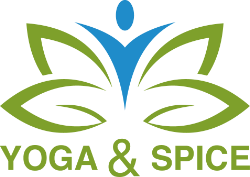B K S Iyengar, one of the ‘fathers of modern yoga’ is famous for the saying ‘Practise and all is coming’.
Like many students before me, and many on the journey, I initially understood these encouraging words as a promise that even the most challenging of postures would eventually be achievable. The downside of such an understanding is what it, after three years of classes, the gap between finger tips and top of the feet has not narrowed significantly.
After working with students with a range of body types and histories I have concluded unequivocally that, while all yoga students will improve both strength and flexibility with regular practice, very few can aspire to master every postures – and some may not ever touch their toes in this life anyway.
So was B K S misleading us? Let’s break his words down……….
‘Practise’; my favourite dictionary definition is ‘to do, or perform habitually or customarily; make a habit of’. NO mention of perfecting anything. After all we go to a yoga practice don’t we?
But what are we practising for? Most yoga classes consist of a series of postures so the assumption that we practise these to get better at them is a pretty obvious one.
But Ivengar said ’All is coming’ – no mention of ‘postures’ at all. That’s because the Forward Bends, the Triangles, the Mountain poses, the Warriors and Lunges’ are simply a means to an end. Not an end in themselves.
At the risk of using a cliche its ‘the journey not the destination’; ‘it’s not touching the toes, its what we learn on the way down’. In a yoga class we explore our bodies, becoming more aware of imbalances and holding patterns. We work with the breath to bring new energy into the mind and body and to access our subconscious. (The breath is the only physiological function that is both sub-conscious and conscious so provides a link between the two).
When we enter into a pose that involves a new movement we set up new neural pathways. So even if the pose if well beyond the limits of a particular body, it is the work we do to master our version of it that provides the benefit.
When we end a practice with deep relaxation we, in effect, break another habit…. the need to be constantly doing. And we allow the body time to heal itself. By releasing muscular tension we let go of the pattern that created it in the first place. As we take the time to become aware of thoughts and emotions, rather than identifying, with them we let go of associated damaging behaviours.
Some of the benefits of yoga are obvious. We feel physically more comfortable day to day whether sitting lying or walking around, our reactions are quicker, we may have more energy or sleep better.
Others are more subtle. Our new innate awareness may prompt better food choices or fewer destructive behaviour patterns. We may find that we are a little more tolerant; that we have more compassion. That we are less demanding of ourselves and more content to be who we really are. Whether or not we can touch our toes.
